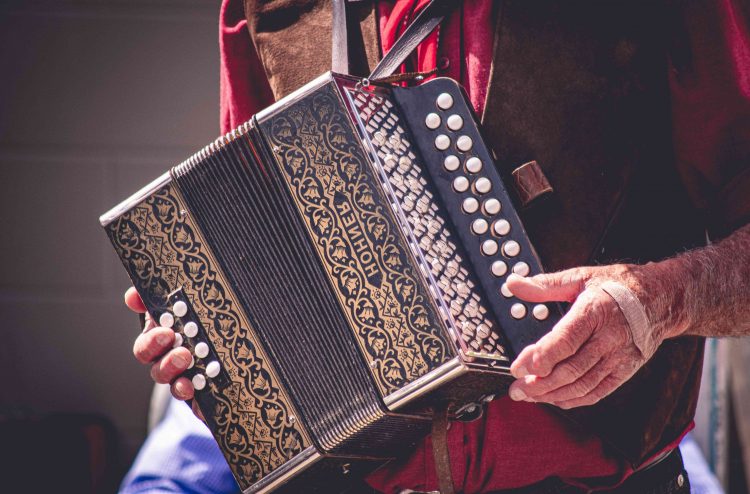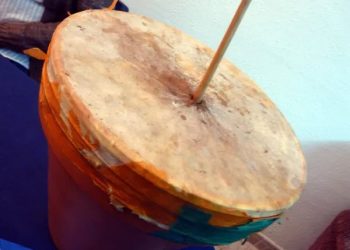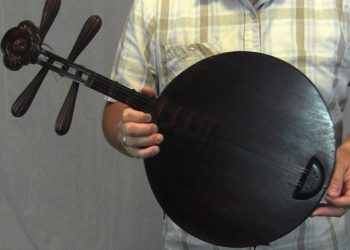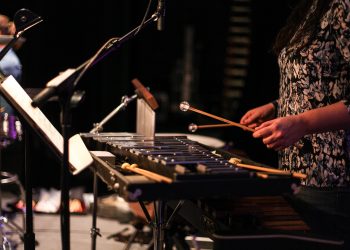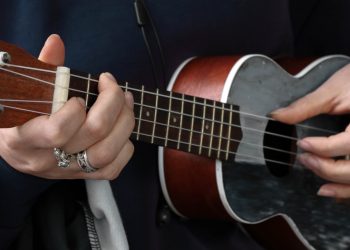Music has always been a universal language that transcends borders, cultures, and time. It’s no surprise that there is an incredibly vast and diverse collection of musical instruments from all over the world. In this article, we will explore the top 19 musical instruments that start with the letter A, from the traditional to the modern, and from the familiar to the obscure. These instruments each have their unique history and sound, and their cultural significance makes them a fascinating subject to explore.
Throughout this article, we will embark on a journey of discovery, exploring instruments from all corners of the world. We will delve into the history and features of each instrument, the various musical genres in which they are used, and some of the most iconic musicians who have mastered them. Whether you are an aspiring musician, a seasoned professional, or a casual music enthusiast, this article will provide a window into the rich and diverse world of musical instruments that start with the letter A. So let’s get started and discover the unique and fascinating sounds of the top 19 musical instruments that begin with the letter A!
1. Accordion
Accordions are a unique musical instrument that many people find enjoyable to play. It is composed of bellows, reeds, and buttons or keys which make different sound when pressed. The accordion can be used to create a wide range of sounds from slow melodies to fast paced music. Playing it has been known to bring joy and relaxation to its players.
The most common type of accordion is the diatonic model, which has two sets of buttons; one for major chords and one for minor chords. These types usually have fewer notes than their chromatic counterparts, but they offer enough variety for a musician to express themselves musically. Additionally, some models come with additional features such as tremolo, bassoon reed switches, and other special effects.
Many musicians enjoy playing the accordion because they can easily learn new songs quickly. Beginners may find the task daunting at first but with practice they will become adept in no time. Experienced players often appreciate the challenge offered by learning more complex pieces and exploring new genres such as jazz or classical music.
The accordion is an excellent tool for those who want to explore music on their own terms without having to rely on traditional instruments like pianos or guitars – all you need is your hands! Its portability also makes it ideal for travelling musicians who don’t always have access to these larger options when performing away from home.
2. Acoustic Bass Guitar
The acoustic bass guitar is an ideal instrument for those seeking a unique sound. It has the same qualities as its electric counterpart, but with much more versatility due to its smaller size and lack of need for amplification. The strings can be plucked or bowed, allowing players to create a range of different tones from soft melodies to hard-hitting grooves. This makes it an excellent choice for both soloists and accompaniment in ensembles alike.
A big advantage of playing an acoustic bass guitar is that you don’t need any additional equipment like speakers or amplifiers; all you need are your hands! As such, this type of instrument is great for busking, recording sessions, small gigs, and even home practice without having to worry about setting up complex audio systems. Additionally, they are lightweight and compact enough to be easily transported between shows and rehearsals.
One downside of owning an acoustic bass guitar is that they require slightly more maintenance than their electric counterparts – they should be stored in cases when not being used so that the wood doesn’t get damaged over time by exposure to temperature changes or moisture levels. Furthermore, tuning them can sometimes take longer since fewer tuners means less stability throughout the entire fretboard.
Despite these potential drawbacks though, acoustic bass guitars remain popular amongst musicians looking to add a bit of low end thump into their music. With the right technique and care taken towards it, one can achieve rich sounds perfect for bluesy riffs or melodic sections alike – making it well worth investing in if you’re serious about exploring new genres musically.
3. Acoustic Guitar
The acoustic guitar is one of the most popular instruments around. It’s a versatile instrument with a long history, and it can be used to create beautiful music in many different styles. From classical compositions to contemporary rock songs, the acoustic guitar has been an integral part of our musical landscape for centuries.
For those just starting out, an acoustic guitar is often the best choice due to its simplicity and relatively low cost compared to its electric counterparts. Even if you don’t have experience playing any other instrument, learning how to play chords on an acoustic guitar can open up a world of possibilities musically. Furthermore, since they require no external amplification or equipment, they are great for practising at home without disturbing anyone else – perfect for beginners!
Of course, even experienced players gravitate towards acoustics sometimes; their portability allows them to perform anywhere without needing complex sound systems or technical know-how – plus having an unplugged element adds a unique dynamic that wouldn’t otherwise be possible with electrified guitars. Additionally, some argue that this type of instrument has more tonal character than electrics do as well – something which only comes with age and wear-and-tear over time.
It goes without saying then that owning an acoustic guitar opens up lots of potential doors both creatively and performance-wise; from intimate solo shows in coffee shops to grand stadiums filled with thousands of people singing along. No matter your level or genre preference though, there’s something special about strumming away on a classic acoustic – making it worth every penny spent on it!
4. Aeolian Harp
Continuing our exploration of the world of musical instruments, let’s take a look at an instrument that isn’t as well-known but still has a long and intriguing history: the Aeolian harp. This plucked stringed instrument originated in Ancient Greece and is believed to have been associated with the god of wind, Aeolus. It can create strange sounds, which some liken to those made by birds or gentle breezes – making it perfect for creating ethereal music.
The Aeolian harp requires no player; when exposed to winds from any direction (including drafts), its strings vibrate and produce sound. This means that it’s often placed outdoors or near windows and doors, usually in gardens or courtyards where there’s more air movement. The interesting thing about this type of instrument is how unpredictable it can be – each gust produces unique melodies depending on its strength and duration.
Despite being used mainly as background accompaniment rather than taking centre stage during compositions, many composers throughout the centuries have written pieces specifically for the Aeolian harp – including Mozart and Beethoven! In fact, this little known instrument was even featured prominently in several famous films such as ‘Dead Poets Society’ and ‘Gladiator’. All this goes to show us just how powerful yet subtle its sonic offerings are capable of being.
So if you’re looking for something unconventional to add texture to your recordings or performances then adding an Aeolian harp could be exactly what you need! With its mysterious tones blending seamlessly into whatever environment they find themselves in, this beautiful machine deserves much more recognition than it currently gets.
5. Agung
Having explored the mysterious sounds of the Aeolian harp, it’s time to examine another instrument that has been used for centuries in traditional music-making: the agung. This percussion instrument is a set of two large hanging gongs made from bronze and related to instruments such as tamtams and cymbals. It’s usually played with mallets or sticks by being struck at different angles – producing low tones when hit on one side and higher ones when hit on the other.
The agung has multiple uses; it can be employed as an accompaniment during ceremonies, rituals, dances and theatre performances. It also has a spiritual significance, often symbolizing strength, power, protection and courage – making it an important part of many cultures throughout Asia. Moreover, its distinctive sound makes it essential in various genres such as Gamelan (traditional Indonesian ensemble music).
In modern times, this ancient instrument is still widely used around the world due to its versatility; producers have incorporated it into electronic dance tracks while rock bands like U2 have featured them prominently in their live shows! The agung can even be found in scoring for TV shows and movies too – adding depth and character to cinematic scenes.
Clearly then, there are countless ways in which you could incorporate this fascinating instrument into your own compositions – whether using pure samples or combining them with synths for more experimental sounds. So why not give the agung a go today? Its rich history combined with its unique sonic qualities make it well worth experimenting with!
6. Ajaeng
The ajaeng is another ancient percussion instrument, closely related to the agung. This bowed zither-like stringed instrument originates from Korea and can be found in various forms throughout East Asia. The basic design consists of a wooden sound box with two strings stretched across it; these are plucked or strummed while being pressed against the body at different angles – resulting in complex and interesting tones.
The ajaeng has traditionally been used as an accompaniment for court music, folk dances and shamanic ceremonies – providing both rhythmic and melodic elements that add texture and atmosphere to performances. In modern times, its unique sonic qualities have also made it popular amongst musicians experimenting with mixing traditional sounds with more contemporary styles such as jazz, hip hop and electronica.
In addition to this, due to its relative portability compared to other large instruments like the agung, the ajaeng is often used by street performers too – adding colour and vibrancy wherever it goes! Its versatility makes it great for creating either gentle moments or dramatic climaxes; perfect for film scoring applications when you need something special but subtle.
Suffice to say then, although not as widely known as some of its counterparts, the ajaeng deserves consideration as one of many musical possibilities available today. Why not give it a try? You just might find yourself discovering new possibilities within your own compositions!
7. Alphasphere
Continuing on from the ajaeng, let us now explore one of the more recent additions to the world of musical instruments – the Alphasphere. This electronic device is like an advanced version of a synthesizer, using four ‘layers’ for creating sounds that are often described as rich and lush. Through its intuitive interface and powerful software-based controls, it enables musicians to express themselves in ways they never thought possible before.
The Alphasphere has already found favour with DJs and producers who appreciate its versatility – allowing them to create complex audio textures quickly and easily. The range of sounds available runs from subtle ambient tones to full blown dancefloor beats; giving performers plenty of options when producing their own unique soundscapes. It also makes it ideal for live performances too – making sure no two shows ever sound quite the same!
Maybe best of all though, is how this incredible instrument can be used by people regardless of experience or skill level. Its user-friendly design means even those new to music production can start having fun immediately; learning more about composition as they go along without feeling overwhelmed or intimidated.
So whether you’re looking for something totally fresh or just want to add some extra spice to your existing set up: whichever way you look at it, the Alphasphere could well be worth considering!
8. Alphorn
The Alphorn is another popular instrument that has grown in popularity over recent years. This traditional Swiss wind instrument is made of wooden sections, joined together to form a long tube shape. It produces a unique sound – often likened to the ringing of bells in its higher register and a low drone in its lower range.
It’s an incredibly versatile instrument too; able to be played solo or with other instruments for added depth and texture. And thanks to its portable design, it can easily be taken out on stage or into the studio without any hassle at all.
For those wanting to get started playing alphorn quickly, there are plenty of resources available online – such as tutorials and instructional videos. But if you really want to take your skills up a level, why not consider taking lessons from an experienced teacher? Not only will they help you develop correct technique but also learn how to use the instrument creatively – enabling you express yourself more confidently when performing live or recording in the studio.
In short: no matter what kind of music-making experience you’re looking for, the alphorn could well be worth exploring further!
9. Alpine Bell
The Alpine Bell is another instrument that has become increasingly popular in recent years. This traditional bell-like wind instrument is made from a combination of brass, bronze and copper – producing an unmistakable sound when played. It’s characterised by its bright, resonant tone – often heard ringing out over the Alps during ceremonial occasions or for signalling purposes.
This versatile instrument can be used to play both melodic lines as well as harmonies, providing plenty of scope for creativity. Additionally, it’s relatively straightforward to learn how to use it too; with many online tutorials and instructional videos available on sites such as YouTube or Vimeo. So if you’re looking for an easy way to get started playing alpine bells quickly – these resources are definitely worth checking out!
Plus there are also opportunities to take lessons from experienced teachers too; they’ll help you develop your technique so you can express yourself more confidently when performing live or recording in the studio. And once you’ve got some practice under your belt, why not give composition a try? With enough experimentation and persistence, you could soon find yourself creating music which expresses your emotions beautifully through this unique instrument.
All in all, no matter what type of musician you may be – whether beginner or advanced – the alpine bell promises an enjoyable experience for everyone who takes part in its magical sounds.
10. Alto Clarinet
Taking the Alpine Bell even further, we come to another wind instrument – the Alto Clarinet. This single-reed instrument is a staple of many orchestral and band settings across the world; its deep yet bright sound helping to bring out musical nuances in various styles.
The alto clarinet’s range covers just over two octaves, making it an ideal choice for those who want to explore melodies or harmonies with greater agility than other instruments may allow. With practice and skill, you can also play some more complex pieces that require fast passages between notes – something that this instrument excels at.
It’s worth noting, however, that mastering the alto clarinet doesn’t happen overnight. Learning how to use all fingers correctly takes time and dedication, as does developing your own unique technique and sound when playing. But don’t be discouraged by this challenge; after persistent effort you will find yourself creating music which truly stands out from the crowd!
All in all, no matter what level musician you are – whether amateur or professional – there’s plenty of potential for self expression through the alto clarinet if you’re willing to put in the hard work required.
11. Alto Saxophone
Moving on from the alto clarinet, we come to another versatile wind instrument – the Alto Saxophone. A staple of jazz and popular music alike, this single-reed instrument is renowned for its warm yet piercing sound. It’s range covers three octaves so you can explore a variety of melodies and harmonies with ease.
The alto sax requires some skill and dedication to master; learning how to move between notes quickly takes time and patience. But don’t be discouraged! With consistent practice, eventually you’ll find yourself creating beautiful pieces that stand out uniquely amongst other musicians. You will also develop your own technique and style – something which will make all your performances truly your own.
Moreover, even if you’re a beginner, it’s still possible to have fun playing the alto sax as there are plenty of simpler songs that require fewer complex lines or fast passages between notes – perfect for those just starting out who want to get a feel for what it’s like playing through an ensemble piece.
All in all, no matter where you are in your musical journey, the alto sax offers endless possibilities for creative expression and development. So grab one today and start discovering the joys of making music!
12. Angélique
In contrast to the alto saxophone, Angélique offers a completely different musical experience. This stringed instrument is part of the lute family and has been used in folk music for centuries. Its mellow sound creates an atmosphere that’s both calming and captivating.
Unlike its woodwind counterparts, playing Angélique requires a lighter touch – it’s strummed with one hand while the other holds down chords on the fingerboard. The strings are made from nylon or gut and have relatively little tension compared to steel-stringed instruments like guitars; this allows for greater flexibility when shifting between notes quickly as well as providing less resistance when trying out tricky chord shapes.
For those looking to take their first steps into learning an instrument, Angélique can be surprisingly easy to pick up – even if you don’t know how to read music! All you need is a good ear and some patience to learn basic melodies before progressing onto more complex pieces.
No matter what your skill level may be, there’s so much potential for creativity here. From slow acoustic ballads to upbeat jigs and reels, Angélique provides endless opportunities for self expression through songwriting or just simply jamming with friends! So why not give it a try today?
13. Anglo Saxon Lyre
If you’re looking for a more traditional sound, the Anglo Saxon Lyre is an ideal choice. This ancient instrument dates back to pre-Roman Britain and has seen a resurgence in popularity over recent years. With its distinctive circular shape and four strings tuned in unison, it’s perfect for accompanying folks songs or creating beautiful melodies of your own.
Unlike most string instruments, the lyre isn’t played with a pick – instead, you pluck directly onto the strings using your fingers. This allows for greater control when playing intricate patterns or chords as well as providing a softer tone than other instruments such as guitars. It also doesn’t require any special equipment; just some basic knowledge of music theory and practice!
For those who want to explore further into this fascinating instrument, there are plenty of online tutorials available which teach everything from basics like tuning up to advanced techniques like changing keys mid-song. Additionally, many artists have released albums specifically dedicated to their love of the lyre – so if you’d rather learn by listening then that option is open too!
No matter what level you’re at musically, why not give the Anglo Saxon Lyre a go? Its unique timbre will bring a whole new dimension to your compositions and jam sessions alike. Plus, with all the resources out there on learning how to play it couldn’t be easier getting started today!
14. Appalachian Dulcimer
The Appalachian Dulcimer is a unique and beautiful instrument that comes from the Appalachian Mountains of North America. This stringed instrument has roots in traditional folk music and is played with a pick or fingers, depending on your preference. Its signature sound has been described as both haunting and uplifting; perfect for creating intricate melodies or accompaniment to songs.
The dulcimer can be found in many different shapes and sizes, so there’s something out there to suit any musician’s needs. It also doesn’t require too much set up – just tune it up using the keys provided, grab your pick and you’re ready to go! Plus its lightweight design makes it easy to transport if you want to take it outside for some open-air jams.
Learning how to play the dulcimer isn’t difficult either; plenty of online tutorials are available which explain everything from basic chords all the way through more complex techniques such as fingerpicking patterns. There are even books specifically focused on this instrument – so whichever route you choose, you’ll soon find yourself comfortable playing the dulcimer.
If you’re looking for an accessible but interesting addition to your repertoire then look no further than the Appalachian Dulcimer! With its distinctive timbre and ease of use, there’s never been an easier way to get started on learning a new musical skill today.
15. Arpeggione
The Arpeggione is another stringed instrument with a unique and captivating sound. This six-stringed instrument has its roots in the 19th century and is similar to both a cello and guitar, making it great for producing intricate melodies. It’s also incredibly versatile; whether you prefer classical music or more modern genres like jazz, it can be adapted to fit any style of playing.
Unlike some instruments that require lengthy tuning processes before they can be played, the arpeggione only requires minimal setup – simply tune up using the keys provided and you’re ready to go! Plus its lightweight design makes it easy to transport if you want to take your new musical skill on the road.
If you’re looking for an accessible but interesting addition to your repertoire then look no further than the arpeggione! With its distinctive timbre and ease of use, there’s never been an easier way to get started on learning a new musical skill today. There are plenty of online tutorials available which explain everything from basic chords all the way through more complex techniques such as fingerpicking patterns. You’ll soon find yourself comfortable playing this wonderful instrument in no time.
No matter what kind of musician you consider yourself – beginner or experienced – exploring how to play the arpeggione will undoubtedly open up a world of exciting possibilities for your musical journey!
16. Array Mbira
The mbira, also known as the thumb piano or African lamellaphone, is an ancient instrument that has been used in traditional music for centuries. It’s a type of plucked keyed idiophone made up of metal prongs (tines) mounted on a wooden board and placed within a gourd resonator. The tines are plucked with the thumbs and fingers to produce melodious tones. This simple yet versatile instrument can be played solo or with others in various combinations to create complex sounds.
Mbiras come in many different shapes, sizes and designs depending on their country of origin. They range from small pocket-size instruments to large versions that can measure up to two feet long. Each one produces its own unique sound, creating beautiful melodies and rhythms when combined together in ensembles. On top of that, they have no need for tuning or maintenance – making them easy to use!
The versatility of this musical device allows it to be used in a variety of ways: accompanying singing, dancing, storytelling, ceremonial occasions and more. Additionally, there are numerous techniques developed over time by different cultures which add complexity and depth to any performance using the mbira. For instance, ‘Kushaura’ is a popular Zimbabwean technique which involves alternating between two melody lines at the same time while playing both hands simultaneously on separate parts of the instrument’s body – producing intricate harmonies which give rise to mesmerizing melodies!
No matter what style you choose to play it in — whether it be classical or modern — this timeless instrument will bring beauty into your life like nothing else!
17. Atumpan
The Atumpan, also known as the talking drum, is an iconic instrument found in West African music. This hourglass-shaped percussion instrument has been used for centuries to communicate messages and stories over long distances — hence its nickname of ‘the telephone of Africa’. The atumpan is typically made up of a wooden shell covered with animal hide on either side. It’s played by striking one end while squeezing or releasing the other end with your hand to change its pitch – creating rhythms that mimic human speech!
This unique rhythmic language can be heard in many traditional songs from Ghana, Nigeria and beyond. In these pieces, each phrase often corresponds to a specific proverb or message being delivered; something which would have been understood by all listeners even before modern communication technologies were available. Even today it continues to be used for ceremonial occasions such as festivals and funerals where communicating important information is key.
In recent years, there’s been an influx of younger generations who are taking up this ancient tradition and bringing it into their own musical styles. They are fusing together elements from different cultures and genres to create new sounds built upon this timeless instrument — making the atumpan more relevant than ever before! From jazz fusion bands incorporating intricate beats into their compositions, to hip hop producers utilizing its low thumping tones in their tracks — the possibilities seem endless when using this powerful tool!
Unsurprisingly then, it’s not hard to see why the Atumpan will remain a vital part of African culture for years to come – no matter what style you play it in!
18. Audiocubes
Audiocubes are another percussion instrument that have been gaining in popularity lately. These small, colorful cubes can be used to create a unique soundscape with their vibrant tones and beats. Each cube is made up of an array of different sensors which respond when they’re struck or tapped, allowing musicians to manipulate the sounds as they go.
The great thing about audiocubes is that you don’t need any musical training or experience in order to use them — anyone can pick up one and start making music! They’re also incredibly versatile; as well as being able to produce a variety of rhythms and melodies, audiocubes can also be programmed using software for more complex compositions. This makes them perfect for both school classrooms and professional studios alike.
What’s more, these little instruments are extremely portable too, meaning you can take your tunes wherever you go! Whether it’s playing on the beach or busking in the street – Audiocubes will provide you with hours of creative fun while inspiring everyone around you with their captivating sounds!
So whether you’re looking for an easy way to get into music production, or simply want something new to add to your existing setup – these innovative cubes could just be what you’ve been searching for.
19. Autoharp
Building on the creative potential of musical instruments, let’s look at another popular one – the Autoharp. As its name suggests, this instrument is designed to provide players with a more automated soundscape; allowing them to create music without having to pluck or strum strings by hand. It works by using an array of felt-covered dampers which can be moved up and down across the instrument’s strings in order to produce different notes and chords.
The Autoharp has been around since the 19th century but it wasn’t until recently that modern technology allowed for greater control over the instrument’s sounds. Today, thanks to advanced pickups and electronic processors, musicians are able to use their Autoharps as part of their regular setup – enabling them to craft unique sonic landscapes with ease!
What makes the Autoharp so appealing is its versatility; while traditional stringed instruments may require extensive practice before they can be played confidently, anyone can pick up an Autoharp and start creating beautiful melodies right away. Plus, there’s a wide range of styles available depending on your needs; from folk tunes all the way through to jazz and classical pieces – you’re sure to find something that suits your tastes!
So if you’re looking for an easy way into musical production or simply want something new to add some flair to your existing setup – why not give an Autoharp a try? With its combination of portability and convenience, it could just become your go-to instrument!
